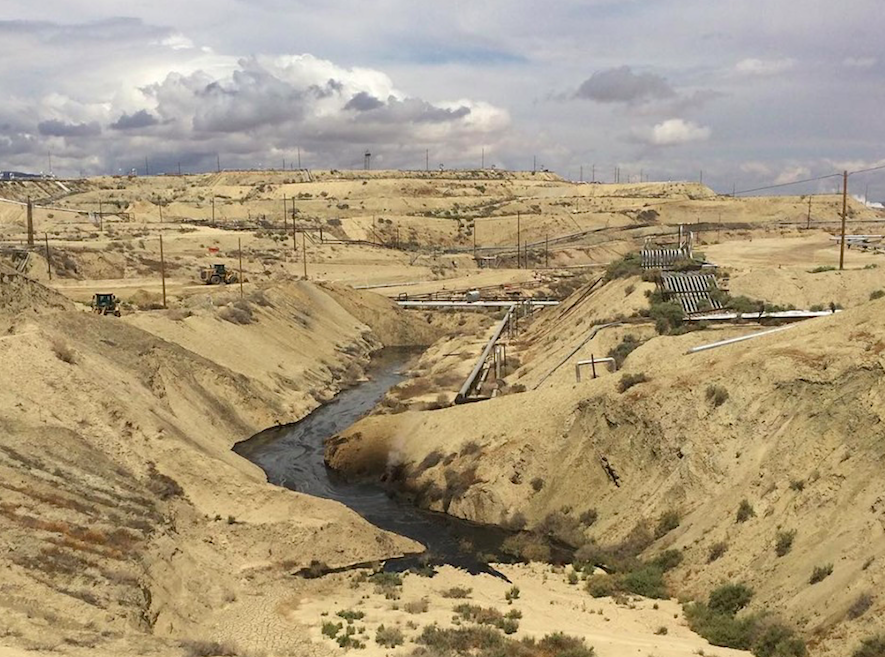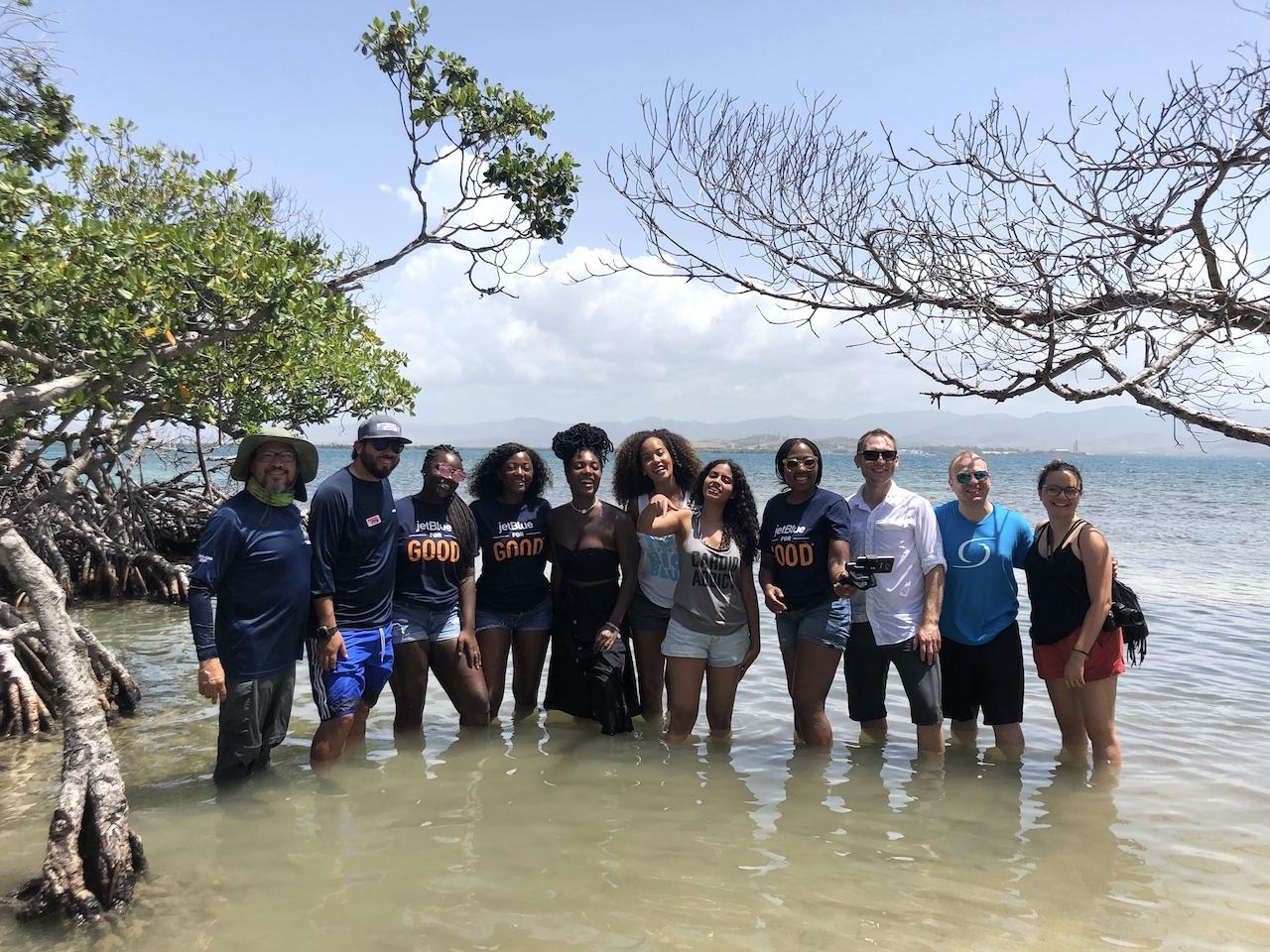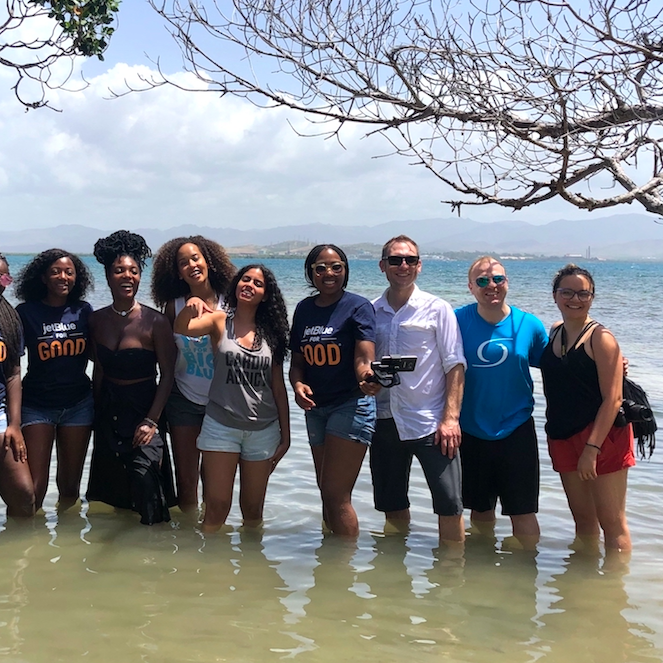Agroforestry Can Combat Climate Change, But Is It Scalable?


What do you think of when you hear “agroforestry?”
Do you think of trees planted amongst crops in a harmonious ecosystem? Do you see pigs in the mix?
Well, in Portugal you might. The main local agroforestry system is called montado, a system in which cork oak grows amongst cereal crops and livestock.
Yes, in the montado, trees and plants are more productive than they would have been on their own. The benefits, though, extend further. Healthier soil, higher biodiversity and sequestered atmospheric CO2 are just a few other advantages of combining farms and pastures.
The montado is an ancient farming system. Its stewardship was so successful over the centuries that the ecosystem now persists in Spain, France, Italy, Morocco, Algeria and Tunisia. These forests came about with the activity of pre-medieval humans tending to the species they found useful in the environment.
Today, farmers in Portugal are getting back to their roots and turning unproductive land into montado.
A healthy montado takes years to build. As the forest grows, chickens are added, then pigs and sheep. Cows come last. In the midst of it all, wild animals—wild boar, lynx and deer—come and go.
And how does the symbiosis between pigs and trees work? Alfredo Cunhal, a new montado farmer interviewed by The Guardian, answers:
“Animals are the key. They are important for the whole ecosystem, as well as part of the food chain. They must be balanced with the tree system. Pigs provide digestion, and are good for the soil, they disturb the ground and fertilize the land. The natural fertility cycles work better with them. The pig is not a meat machine but a friend of nature.”
The vegetation, of course, provides food for the livestock, but also much-needed shade, especially as summers continue to grow hotter around the world.
The ninth most effective way to combat climate change
Away from the Mediterranean, this form of agroforestry has another name: silvopasture.
Silvopasture was ranked number nine on the climate research organization Drawdown’s list of the 80 most effective ways to battle climate change, mostly for its ability to counteract the methane produced by cows.
Livestock is estimated to produce 27 percent of the methane in the atmosphere through their digestive processes. And methane is the second most prevalent greenhouse gas, following carbon dioxide, at 10 percent of total annual emissions.
Farmers who invest in silvopasture see many more benefits than sequestering carbon. Drawdown lists the following:
- Year-round income from trees, livestock and forestry products like fruit, nuts and mushrooms
- Healthier plants and animals
- And greater resiliency because of the diversity of the ecosystem
After a $42 billion investment, Drawdown estimates that farmers would find $699 billion in financial gain from diversifying their revenue.
What will it take to scale silvopasture?
Drawdown notes that 2.7 billion acres are suitable for silvopasture worldwide. If the current 351 million acres increases to 554 million by 2050, silvopasture would be able to reduce atmospheric CO2 by 31.2 gigatons.
In 2018, a total of 37.1 gigatons of CO2 was emitted just from fossil fuel energy, and emissions in 2019 are projected to be even higher.
The potential for silvopasture is there. Farmers only need the knowledge and incentive to transition. Drawdown claims that, historically, the practice has spread most effectively through farmer-to-farmer communication. But there are also grants to support those who are interested.
In Raleigh, North Carolina, the NC Choices initiative at the Center for Environmental Farming Systems is assisting 15 farmers interested in raising livestock in small woodlots. The owners of these lots are considering using the trees for timber.
The cattle, sheep, goats and hogs will benefit from the food and shade under the canopy, and the trees will benefit from the fertilizer.
Silvopasture is Drawdown’s top-rated agricultural practice for combatting climate change. With communication, grants and initiatives, the hope is that farmers and ranchers around the world will increasingly reap the benefits of growing trees, shrubs, cows and pigs together.
Image credit: USDA
Report: Food and Retail Companies Moving Too Slow on Deforestation


Deforestation occurs at a rate of over 12 million acres (5 million hectares) a year—or the equivalent of about 15 soccer fields a minute. Yet according to CDP, many of the world’s leading retail and food brands are not taking enough action on stalling deforestation, which has a massive impact on biodiversity and climate change.
With countless 2020 environmental deforestation commitments fast approaching, CDP’s recent report on the role of corporations in the struggle against deforestation is as much a call to action as a cause for worry—despite the fact that more companies are engaging with NGOs to take on this problem. If companies don’t step up, young people, environmental activists, NGOs and governments certainly will.
According to the United Kingdom-based organization, of the 306 companies that CDP currently describes as having “high impact forest risk,” these five conclusions generalize the state of the world’s forests and how these companies affect them:
- Companies’ disclosure and transparency on the subject of deforestation overall can be described at best as poor. CDP claims 70 percent of the companies asked to disclose forest-related information by investors declined to do so.
- Transparency matters: Almost a third of reporting companies do not disclose forest-related matters in their risk assessments. But of those that do, 92 percent identify substantial risks linked to deforestation.
- Of those companies that understand forest-related risks, together they report a combined $30.4 billion in potential long-term losses connected to deforestation.
- About a quarter of reporting companies still have not begun to eliminate deforestation within their supply chains.
- There are benefits for companies willing to take a stand on deforestation, including an estimated total business opportunity of almost $27 billion, according to CDP’s researchers.
CDP has called out 30 global companies that did not report forest-related disclosures between 2016 and 2018. These include widely-recognized brands that can be found along many a high street or within a shopping center, including British American Tobacco, Walgreens Boots Alliance, Mondalez, Kroger, Macy’s and Gap, Inc.
Social movements are helping to raise awareness about risks related to deforestation, and companies would be wise to follow these activists’ lead. The first half of 2019 alone witnessed large numbers of demonstrations worldwide that urged governments to take action in order to protect the planet from what they described as impending climate disaster. School strikes for climate action, for example, included over 1.4 million young people, from Australia to the U.S., who walked out of school and demanded faster action on climate change. In turn, governments and industries from a range of countries, including Colombia (of which a forest in the country’s coffee growing region is shown above), Norway and South Africa (as well as the U.S.) have been sued over their alleged roles in climate crisis.
Litigation often stems from inaction, and this is where companies can step in and be a part of solving the climate crisis instead of having their brand intertwined with, and signifying, the problem of deforestation. “Identifying risks is a critical element in driving action. [There is] a significant relationship between the awareness of substantial risks and the following company implementation of mitigation actions,” concluded the authors of CDP’s report. “If a company identifies substantial risks, it is more likely to be working to address them.”
Image credit: Leon Kaye
Pioneering Impact Investing Platform Pushes for Widespread Change


With the goal of shaking things up on a global level, the Andreessen Horowitz-backed asset management platform OpenInvest has become a signatory to the United Nations-supported Principles for Responsible Investment (PRI), the world’s leading proponent of responsible investment.
Since its founding in 2015, OpenInvest’s mission has been “to democratize capital and give every investor an easy and low-cost way to fully reflect their values in their portfolios, using their investments as a powerful tool to drive social change.”
The company’s platform enables customization, direct indexing and impact investing at scale for financial advisers, institutions and individual investors. It works by asking investors about issues they care about—with examples including climate change, human rights and gender equality—and then automatically creates a customized index fund comprised of companies that do best on those topics. Individuals can join the platform with a minimum $100 investment.
The future of impact investing
“We call it the post-fund future,” Claire Veuthey, director of ESG and impact for OpenInvest, told TriplePundit. “We strongly feel this is where industry is heading. Technology has made possible direct indexing which enables a ton of customization. An investor on our platform can buy individual stocks and maintain a product that looks like an ETF [exchange-traded fund] product but is customized to what they care about. It’s part of the growing conscious consumer trend and a really intense desire for customization.”
Joining the PRI will bolster OpenInvest’s desire to change the asset industry and improve the industry’s technology by giving them a seat at the table with the broader investment community, Veuthey said.
The PRI, launched in 2006, today has over 2,300 signatories. It's made up of six voluntary and aspirational investment principles that offer a menu of possible actions for incorporating ESG (environmental, social and governance) issues into investment practice.
The OpenInvest platform integrates multi-sourced ESG data and offers a number of causes, such as divestment from fossil fuel producers and major greenhouse gas emitters, as well as investment in corporate women leaders, LGBTQ-friendly companies and companies supporting refugees.
Joining the PRI is “not really a stretch for us," Veuthey added. "There’s nothing we’re doing that is not ESG, but being under the auspices of a global collaborative organization is a way to keep moving the industry forward.”
It’s not surprising that OpenInvest chose this moment to join the global movement in responsible investment—which, as 3p has reported on extensively, is growing in leaps and bounds. According to a recent survey, global sustainable investment reached $30.7 trillion at the start of 2018, and investors who integrate environmental, social and governance principles into their portfolios now represent about $17.5 trillion, up 69 percent from 2016.
An industry ripe for disruption
It seems that OpenInvest’s largest backer, Andreessen Horowitz, one of the world’s most well-known venture capital funds, agrees. It led OpenInvest’s $3.25 million investment seed round in 2017.
“Their support is a huge testament to what we’re doing,” Veuthey told us. “They see the investment industry as very much ripe for disruption. The large investment institutions have worked the same way for decades. My sense is that venture capitalists like Andreessen Horowitz see the writing on the wall and understand the shift that is taking place.”
The founders of OpenInvest, one of the first venture-backed public benefit corporations, come from the hedge fund industry or large banks (Veuthey is former head of ESG for Wells Fargo Asset Management) and some are civil society leaders. What they have in common “is changing the game of what is possible in public investing,” Veuthey said.
She sees a tipping point on the horizon, where OpenInvest’s vision of mainstreamed ESG investing and a more democratized form of impact investing becomes a standard approach.
“Will it happen in 2019? I’m not sure, but it is starting to happen in smaller networks, [based on] the conversations we’ve seen," she said. "There’s a real tension between what compliance regulations and control require in large organizations and the customization that technology enables. We think that the transparency we can offer financial advisors—which they can share with their clients—is going to become even more important.”
Image credit: Headway/Unsplash
Latest California Oil Spill Builds the Case for More Renewable Energy Investments


The latest California oil spill should make it loud and clear to energy companies that the time to shift more of their portfolios to renewables was yesterday—considering the fact that California has one of the most ambitious clean energy plans across the globe.
The latest accident isn’t on the Golden State’s coast, so it lacks the visual impact of other oil spills that have quickly generated a sense of urgency. Of course, the oil exploration industry in California has undergone a complete makeover since the infamous Santa Barbara oil spill of 1969. That catastrophe led to landmark environmental legislation both within the state and at the federal level.
This oil spill—which totals about 800,000 gallons of oil and water combined, the Associated Press reports—is occurring inland in Kern County, the base of California’s oil patch. For film buffs, this southern region of the San Joaquin Valley, about a two-hour drive north of Los Angeles, was the setting of the 2007 movie There Will Be Blood starring Daniel Day Lewis.
As of press time, there has been no blood resulting from the accident at the Cymric Oil Field, located 35 miles west of the city of Bakersfield. But heads have rolled, as California Gov. Gavin Newsom recently fired the chief of the state’s oil and gas division in the wake of reports that the regulating agency has issued twice as many fracking permits this year compared to 2018.
According to several press reports, Chevron, the company managing operations at Cymric, is covering the cost of the cleanup and has hired contractors to do so with state supervision. Most accounts of this accident describe the loss of wildlife as minimal, and the area affected is in a remote part of the state. The spill is largely contained in a canyon, though critics say long-term damage could prove to be problematic due to regulatory exemptions that nixed any protection of a nearby aquifer. Regulators and energy industry analysts can breathe a sigh of relief as the sense is that it the environmental damage could have been worse.
Nevertheless, the lack of photos of oil-soaked seals and birds doesn’t make this most recent California oil spill any less urgent. Opponents of California’s oil and gas sector claim that this spill demonstrates that state regulators have become complacent about their role in monitoring the region’s energy sector.
“Disasters like these are terribly dangerous yet utterly predictable,” said Hollin Kretzmann, a senior attorney at the Center for Biological Diversity, in a public statement. “California’s industry-friendly oil regulator continues to provide about as much protection as a screen door on a submarine. Gov. Newsom can create a safer future for the state and the planet by reining in the state’s dirty fossil fuel production and infrastructure.”
Environmentalists and other activists say the Cymric accident is linked to the use of steam injection techniques that oil companies often use to extract petroleum from the oil field. While the land mass of the Cymric field is relatively small, the amount of potential reserves makes it the site of one of the state’s largest oil reserves. But as is the case with many legacy oil deposits, conventional oil extraction techniques aren’t enough to obtain all that black gold.
Rhetoric, accusations and wrist-slapping aside, the mess in Kern County is an opportunity for the state’s leadership to showcase its various clean energy incentives and work with the private sector. There is no shortage of programs in which companies can invest—whether they help make the state’s agriculture sector more sustainable or clean tech solutions like energy storage. But such a shift is about more than transitioning away from fossil fuels: Aligning with California’s clean tech agenda is also a way to build trust with stakeholders, improve a company’s brand reputation and mitigate long-term risks linked to stranded assets.
Image credit: California Office of Spill Prevention and Response; Instagram
Juul: When an Apology Makes a Crisis Worse


In case you missed it late last week, we saw a rare case of a corporate leader making an apology for the harm a product caused. The apology came straight from the CEO of Juul, Kevin Burns, and not from the company’s communications department. Well, sort of.
“First of all, I’d tell them that I’m sorry that their child’s using the product,” Burns said to a CNBC film crew during an interview for a documentary aired last night that covers the rise of vaping across the U.S.
Unfortunately for Burns and his company, the apology came with a caveat that only incensed Juul’s critics even more.
“I hope there was nothing that we did that made it appealing to them,” he continued.
Matthew L. Myers, president of the Campaign for Tobacco-Free Kids, didn’t mince any words:
“Once again, Juul is following the tobacco industry’s playbook: Proclaim loudly that they don’t want kids to use their product, while never admitting that their marketing targeted and attracted kids. Like its partner Altria, Juul still refuses to admit that the company’s marketing targeted kids or has played a major role in youth use of its e-cigarettes—despite overwhelming evidence to the contrary.”
Myers pointed out common criticisms of Juul, including allegations that the company used “sleek” marketing tactics which showcased sweet-tasting flavors that appealed to teens—and hooked them with high doses of nicotine that researchers say come with a bevy of health risks. Meanwhile, despite Juul’s rapid pivot and increased news about the risks of using e-cigarettes, teen vaping continues to surge across North America.
Part of why Juul and the tobacco giant that invested heavily in the startup, Altria, are now grappling with this mess is because the companies’ founders focused so much on the products’ perceived innovation without anticipating any negative impacts.
“Juul’s damage was accelerated by its rapid scale,” Barie Carmichael, author and Batten Fellow of the University of Virginia’s Darden Business School, told TriplePundit earlier this year.
The company's founders said they wanted to find a healthier alternative to smoking for adults. The problem, however, was that teens took to Juul like wildfire—and it turns out the brand’s nifty and flavorful products contained way more nicotine than conventional cigarettes. The company has since changed its marketing tactics, but so far, it has not been enough to satisfy parents, public health advocates and, now, the U.S. Food and Drug Administration (FDA). Meanwhile, many of Juul’s loyal customers have not been pleased with the changes either.
The bad news for Juul will most likely continue to pile on. As a statement issued yesterday by the FDA reads:
“While certain ENDS [electronic nicotine delivery systems] products may hold some promise in helping addicted adult smokers transition away from combustible tobacco to a potentially less harmful form of nicotine delivery, these products—like all tobacco products—pose risk, and should not be used by kids.”
And therein lies Burns’ problem: His half-baked apology comes across as insincere. At the same time, he presented his company’s legal and communications team with even more headaches due to a comment that comes across as acknowledging that all that youthful, lifestyle-oriented marketing could have lured more nicotine addicts after all.
Meanwhile other companies are fleeing the brand, along with similar products, in droves. Retailers including Walgreens and Walmart have ceased selling e-cigarettes, and San Francisco has banned their sales altogether.
Burns’ apology, along with the CNBC documentary covering teen vaping, together make it far more difficult for Juul to salvage its reputation. And as corporate apologies go, Burns’ attempt falls flat for its inauthenticity—akin to those airline apologies we’ve long rolled our eyes at: “We’re sorry for any inconvenience your delay may have caused.”
As investigations and even lawsuits continue to mount, Burns will most likely regret he ever uttered those words.
Image credit: Itay Kabalo/Unsplash
Finding New Life for Single-Use Biopharma Plastic Waste


The picnic table at which you’re enjoying your summer BBQ may have been a plastic glove, shoe cover or chemical container involved in the manufacturing of biopharmaceuticals in its past life.
Thanks to a partnership between global biopharmaceutical products supplier MilliporeSigma and specialty waste management company Triumvirate Environmental, a portion of single-use biopharma plastic scrap is now being diverted from landfills and upcyled into salable products.
30,000 tons of biopharma plastic waste are landfilled or burned annually
Globally, an estimated 30,000 tons of biopharma single-use products are landfilled or burned each year. One reason is that recycling biopharma plastics isn’t as simple as recycling ordinary plastic. The plastic items used in the production of pharmaceuticals – such as bioreactor bags, tubing, filtration systems and chemical containers -- often contain a combination of materials such as silicon, polyethylene and polypropylene. When combined, these materials are difficult to separate.
Despite the difficulty, MilliporeSigma, which manufactures such items, wasn’t deterred. The company is part of German-based Merck KGaA, which reports a commitment to using its “expertise to improve the sustainability balance” of its products, as well as to developing new solutions that support its customers in reducing their environmental impact.
As part of its commitment, MilliporeSigma piloted a recycling program where staff manually cut up items to separate the different plastics before they were shipped to a reclaimer.
Jacqueline Ignacio, global manager of customer sustainability solutions for MilliporeSigma, recently explained to Plastics Recycling Update that the approach was neither safe nor cost-effective, and it couldn’t provide the volumes the recycling vendor needed.
“Obviously, if we were to roll out a program like that, the cost of that would have outweighed the benefits and we would not have been able to maintain it,” Ignacio said.
Persistence pays off
But MilliporeSigma and Ignacio didn’t give up. They found a willing partner in 2015 with Triumvirate Environmental, a Massachusetts-based company that provides collection and disposal of dangerous chemicals and bio-hazardous waste. Together, they developed the Biopharma Recycling Program, which finally found an efficient way to fully recycle single-use and disposable single-use biopharma plastic products without segregation or disassembly.
This is how it works: MilliporeSigma’s customers in the Eastern half of the United States contract with Triumvirate to have their scrap plastic materials collected. Triumvirate transports the plastics to its Pennsylvania facility where they grind, shred and separate the plastics before blending them into a homogenous mix. If any plastics have been in contact with biohazardous waste, they also sterilize them.
Triumvirate employees then mold the mix into plastic lumber, speed bumps and shipping palettes. Voila! Closed-loop.
Triumvirate sells the products under its BestPLUS brand. Available in multiple sizes and colors, the lumber is used in landscaping, picnic tables and other applications. Triumvirate also sells the plastic shipping pallets to biopharmaceutical manufacturers to reduce the risk of contamination brought into facilities by wooden pallets.
To date, MilliporeSigma is the only company that has partnered with a waste management company to address the unique and challenging disposal issues that come with single-use products. In recognition of its efforts, in 2018, it was awarded a Pharma Innovation Award by Pharmaceutical Manufacturing magazine.
All eyes on the West Coast
Due to the cost and environmental impact of transport, Triumvirate currently only collects plastics from biopharmaceutical manufacturers east of the Mississippi River. Not a bad place to start, however, given that East Coast biopharmaceutical drug sites generate an estimated 4,500 tons per year of single-use plastics.
Ultimately, MilliporeSigma and Triumvirate would like to find a way to serve manufacturers on the West Coast as well.
“Hopefully, in the next year we’ll have a way to at least collect and condense the shipments from the West Coast to the east so that it makes more sense from a greenhouse gas footprint – carbon footprint – as well as the transportation costs,” Ignacio said during her interview with Plastics Recycling Update.
As biopharmaceutical manufacturing continues to increase and with it the use of single-use plastics, MilliporeSigma’s and Triumvirate’s Biopharma Recycling Program will continue to do its part to divert the waste from landfills and incinerators. Hopefully others will join them.
Image credit: Roberto Nickson/Unsplash
JetBlue Helps Rebuild Puerto Rico with Habitat Restoration


Two years ago, Puerto Rico made the news after Hurricane Maria swept through the commonwealth, causing thousands of deaths and destroying homes and infrastructure. Puerto Rico’s plight stayed in the news because of insufficient disaster relief.
The U.S. government’s ongoing delays in providing emergency aid to rebuild homes, schools and hospitals created an opening for businesses to do their part. Many, including Google and Lowe’s, donated millions of dollars, and other organizations have been going even further.
Just a week after Maria hit landfall, JetBlue launched 100x35JetBlue — a program to provide practical and monetary support to the islands over 100 days and beyond with 35 initiatives. The name refers to the size of the territory’s mainland in miles. JetBlue continues its efforts this year by restoring the seagrass and mangrove habitats of the Jobos Bay National Estuarine Research Reserve, near Ponce.
This summer, JetBlue joined The Ocean Foundation and other local organizations to learn how to restore ecosystems that protect coastlines. These are some of the habitats that were decimated during Hurricane Maria. In addition to hands-on work, JetBlue also offered financial support to The Ocean Foundation.
These rehabilitation efforts fit into number 31 of JetBlue’s initiatives — “Supporting the replenishment of vegetation.”
Other initiatives included immediate help, such as:
- Providing daily relief flights for customers at reduced fares
- Offering volunteer infrastructure experts seats on flights at no cost
- And the transport of supplies from non-profits, NGOs and government agencies at no cost to those organizations
Number 35 of all these initiatives involved developing a long-term plan outlining JetBlue’s continued support for the Puerto Rican community and economy.
Does Puerto Rico still need help?
Two years after Hurricane Maria, Puerto Rico is still recovering from the aftermath. While Congress allocated $35 billion to disaster recovery after the 2017 hurricanes, application has been slow. As of spring 2019, much of the money has remained unspent in Puerto Rico, in part because plans for allocation are still in the planning phase (in addition to allegations of corruption).
This money remains essential, as estimates have gauged that as much as $94 billion in damages occurred. The mass exodus of Puerto Ricans also exacerbates the problem. Of the 3.3 million population in 2017, 130,000 have left, and the government expects an additional 8 percent to leave by 2024.
There is still much rebuilding to be done. Approximately 80 percent of the islands’ crop value was erased by the storm. Replanting takes time and money. Additionally, many homes still have tarps for roofs. Even now, many Puerto Ricans have trouble accessing adequate food and social services.
Moving forward, economic recovery and hurricane resilience are essential. Projects like mangrove and seagrass restoration help ensure that Puerto Rico remains strong amidst coming summer storms.
This season, meteorologists are expecting four to eight storms that could become hurricanes in the Atlantic.
Mission in action
Ever since its inception in the late 1990s, JetBlue has sought to differentiate itself from other airlines by maintaining superb customer service. “We’re going to bring humanity back into air travel,” David Neeleman, JetBlue’s founder, promised in 1999.
From there, its mission became: “to inspire humanity — both in the air and on the ground. We are committed to giving back in meaningful ways in the communities we serve and inspire others to do the same.”
JetBlue’s focus on culture has helped it maintain a competitive advantage over other airlines. Its commitment to specific communities that the company calls home reinforces its niche in air travel — re-introducing humanity where it is lacking.
This year marks the 13th time JetBlue has ranked first in customer satisfaction among low-cost carriers, according to the J.D. Power North America Airline Satisfaction Study.
JetBlue’s mission — as well as its presence on the islands, with around 500 crew members living in Puerto Rico — has propelled the airline to do more than give a lump sum to nascent relief efforts.
While JetBlue’s promises and pledges may have seemed ambitious when the company first came onto the scene twenty years ago, the airline has shown that commitment to principles can bring about success.
Its continued commitment to Puerto Rico is just one example of JetBlue’s dedication to its customers and communities.
Would you like to do your part for Puerto Rico? You can find a charity here.
Image credit: JetBlue’s 3BL Media Newsroom
How Authenticity Can Combat Brand Reputation Crises


Social networks keep every company on its toes. From viral videos to unflattering photos to sound clips on repeat, there is almost no escaping bad press—because quite often, it’s salacious. The 19th century adage that “there’s no such thing as bad publicity” is a myth.
When your crisis communications is a few fries short of a Happy Meal
Take for instance the recent McDonald’s snafu in which two children, ages 9 and 7, joined with the BBC’s War on Plastics program went to deliver a petition to McDonald’s London headquarters requesting the restaurant stop giving plastic toys with kids’ meals. What ensued was video footage of a security officer escorting two teary-eyed children from the office as they attempted to hand in their petition. This is not exactly a way to engender a moment of positive sentiment for McDonald’s.
While this story may have garnered more press for the girls’ mission, it did not shine a flattering light on a highly visible multinational corporation. Earning consumers’ trust and business and maintaining a positive brand reputation go hand in hand and are critical to overall business health.
Dissatisfied customers, on average, tell nine to 15 other people about their experience according to one study. While this is troublesome, it is dramatically worse for a brand caught in a bad moment when the incident goes viral. It has the potential to become a crisis.
A crisis can be defined as a situation that results in disruption of operational processes or influences stakeholders’ perceptions negatively. A crisis may significantly impact a business’s profitability, reputation and long-term operational success.
When your business is faced with a potential brand reputation crisis, what is the best course of action?
Authenticity: Managing communications with affected customers is critical. Authentic communication comes naturally when your organization walks its talk—top-down and bottom-up.
McDonald’s deploys many sustainability initiatives, including improving the corporation’s sourcing, packaging and transportation processes to lessen environmental impacts. What was missing in the plastic toys mishap was authenticity. If an organization promotes that it cares about sustainability, then responding to children who also care about the environment should not be a difficult task.
Perhaps if McDonald’s had responded to the girls’ petition properly, the camera incident could have been avoided.
Burger King was sent the same petition and was not the subject of a doorstep interview. Burger King sent two replies: the first, letting the girls know what was happening with their petition; and, a second, stating the company is considering the removal of toys and ‘development of alternatives” with a goal for a ‘more sustainable toy solution’ being in place by 2020.
Another recent example of positive authentic communication is Starbucks’ response after six police officers were asked to leave a store in Arizona. Starbucks issued an apology to the Tempe Police Department. It was an uncomfortable situation that attracted a lot of media attention in large part due to the aftermath of the arrest of two black men inside a Philadelphia Starbucks last year. This time, Starbucks was far more nimble in its response.
If dedicating resources to developing an authentic culture are ever questioned, note that Belief-Driven Buyers are now the majority across all age groups and all income levels in every market surveyed in the Earned Brand 2018 Edelman study. In fact, communications expressing a brand’s stand have a greater effect on a consumer’s intent to advocate for the brand than communications highlighting product features.
Clear expectations: Letting team members know how to respond to customers, detractors, social media comments and unannounced people with cameras may seem absurd but it may save the organization from a highly publicized embarrassing encounter.
Review and consider the most authentic responses possible. Again, if the organization’s culture is ingrained and authentic, the voice of organization will ring clearer and make crisis communication responses less cumbersome.
Transparency goes a long way here, too. Companies that value their employees enough to share information with them, embolden them because they have at hand the information needed to respond. Knowledge equates to fewer stumbles during crisis communication situations.
Update your communications policies on a consistent basis: Keep your team abreast of developments. Share the information. From front door staff to security personnel to CMOs to CEOs, an inclusive, respectful company culture will elevate any outbound communications in regards to business operations.
If a crisis occurs, it is important that after the storm has settled to gather the communications team to dive into a postmortem:
-
What worked well, and what didn't
-
Points of confusion in the process
-
Suggestions for future process changes
Updating your communication policies also should include the nitty gritty, including the most updated contact information.
As social networks evolve, business reputation management will also advance. A big takeaway here is corporate authenticity. Be mindful of brand management techniques. If you tout that you care about the environment, consider how much effort it should take to issue a response defending the organization’s claims and actions. If it takes a crisis to generate a better response, perhaps reviewing what your company promotes should go under review.
Image credit: Pexels
Food Tech Watch: 'Molecular Coffee' Can Help Fight Deforestation


A real coffee connoisseur will tell you that it’s a sin to take your coffee with any amount of milk or sugar. They’ll say it sullies the rich taste and ruins the whole ritual of coffee. If you don’t like the bitter, acidic flavor of coffee, you’re simply not experienced enough to appreciate it.
Jarret Stopforth, however, wasn’t satisfied with that answer. “Why does coffee have to be bitter?” he asked. For most of us, that idle complaint would be the end of the thought. Unlike most of us, Stopforth is a food scientist and was fully equipped to tackle the problem.
We’ve long known that coffee is a complex drink composed of upwards of a thousand compounds. Stopforth and cofounder Andy Kleitsch turned a garage into a lab and spent months dissecting those compounds to learn about their role in coffee’s flavor, aroma and mouthfeel.
The result of their work was more than just a reasonable facsimile of coffee—it was a beverage that was arguably superior. The newly minted Atomo coffee didn’t have the acrid flavor that makes coffee so polarizing. You didn’t need to train yourself to enjoy (or tolerate) it or mask the taste with cream and sugar. Atomo coffee is just . . . good-tasting coffee.
The artificial coffee is the latest entry in the series of synthetic foods and food tech innovations. Most media attention has been on cultured-meat products, like Memphis Meats, but there are other products being developed to meet the demand of sustainable and ethical foods. One particularly interesting innovation is a process that uses nothing but electricity and air to create animal feed.
Considered in a larger context, Atomo’s work benefits more than just foodies and caffeine addicts. The global coffee trade is one of the largest agricultural trades, both in terms of volume and money. The sheer amount of coffee being produced exacts a heavy toll on the environment and society, from Colombia to Ethiopia.
Coffee only grows in tropical climates and those regions tend to be covered in rainforests which have to be clear-cut to make room for the coffee plantations. The coffee industry is a significant contributor to deforestation in the Amazon. Furthermore, it’s an industry rife with worker exploitation both in developed countries and under-developed ones.
Not to mention Fair Trade Coffee, according to plenty of critics, is a mostly meaningless label. But, hey, at least we can still get $1 coffee at McDonalds, right?
Atomo neatly sidesteps these ethical dilemmas by synthesizing everything they need right at home. No trees and no people were harmed in the making of this coffee. Much like its cultured-meat counterparts, “molecular coffee” will leave no blood on your hands.
The development arrives just in time, too, as the global crop of coffee is coming under fire—almost literally. Climate change is already having a measurable impact on the coffee-growing industry and the effects are expected to get much worse in the coming decades. Between the anticipated droughts, extreme weather, desertification, pollinator die-offs and expanded disease ranges, there’s a very real possibility that we won’t be able to continue to serve up the 2.25 billion cups of coffee that are consumed every day.
It appears, then, that Atomo has scored a hat trick. They’ve made an artificial coffee that (arguably) improves on the flavor of natural coffee, that doesn’t harm the environment or exploit people, and that forecasts future product shortages and offers a sustainable solution. When real coffee inevitably becomes a rare luxury, Atomo will have already been iterating on their brew for decades.
Granted, their success is not totally assured. They had a successful Kickstarter campaign, several successful public product testings, and have recently opened a brick-and-mortar display kitchen in Seattle. The founders have been building their board and courting investors, all while continuing to develop and refine their synthetic coffee.
It’s rare to see a food startup positioned so well. Atomo has the potential to be a brand we see a lot more of in the coming years, and hopefully they inspire others to find similarly sustainable and ethical solutions to pressing problems.
Image credits: Atomo
Brightly Shows How Worker-Owned Cooperatives Can Scale Up


At a time when American workers often feel overloaded and stressed on the job, worker-owned cooperatives—businesses owned and governed by their employees where each one has one vote—are viable solutions that can increase employee satisfaction. These worker-owned cooperatives allow for employees to develop their leadership skills and have more control over their working environments, leading to less employee turnover and a far narrower pay ratio between C-suite leaders and employees (a 2 to 1 or lower ratio, as opposed to over 300 to 1), as well as increased profits.
Barriers to scaling worker cooperatives
However, worker-owned cooperatives are not the norm within the small business landscape in the U.S. The 450 worker cooperatives make up just one-thousandth of a percent of the 5 million U.S. small businesses with less than 500 employees, and most worker cooperatives employ only nine workers, according to a 2017 report from the Democracy at Work Institute.
The small scale and the limited number of worker-owned cooperatives results from various barriers, such as the cultural narrative that puts individual against community, minimal policy and impatient capital that values fast returns. The silver lining is that these barriers can also inspire entrepreneurs to innovate and partner with leaders in their communities to develop organizations that create social good through their service.
“I believe that many of the barriers to worker co-op development can be surmounted over time or successfully addressed through a well-designed initiative and through coordinated efforts to bring the movement to scale,” wrote Hilary Abell, the current head of Project Equity, in a 2014 report.
A franchise of worker cooperatives provides a way for cooperatives to scale
One group of cooperatives that has created a well-designed initiative to scale is Brightly, a franchise of worker-owned cooperatives in New York City that offers cleaning services. Brightly is a licensed nonprofit franchise developed with support from the Center for Family Life, which is a community-based organization that has been incubating worker cooperatives for over a decade.
Traditionally, franchise agreements include the purchase of the local franchised business and royalties for training and for using the franchisee’s brand. The Brightly worker cooperative franchise is different. First, the franchise is a nonprofit endeavor. Secondly, there is no upfront franchise fee and a very lenient non-compete clause, according to Phyllis Robinson, who coordinates the project at the Center for Family Life.
The franchise attempts to remove the barriers involved in successfully starting a worker-owned cooperative. By providing access to a strong brand with visibility in the marketplace and shared resources to reduce costs, a franchise of worker-owned cooperatives enables low-income entrepreneurs to grow their businesses.
The process of forming the Brightly franchise agreements was complex since Brightly aimed to mold conventional franchise documents to serve the interests of Brightly workers.
“We met weekly with the members of the cooperatives to go through the 202-page [legal] document and pulled out the clauses that weren’t fair to them,” Robinson explained. “[The workers] pushed us on it and, in the end, we all got to a really positive agreement.”
Not only does Brightly’s position as a licensed nonprofit franchise illustrate an innovative way to overcome lack of access to capital, but the co-op also demonstrates how all entrepreneurs can reinvigorate business-as-usual models to create social good.
The time is right for worker-owned cooperatives to multiply
Brightly is not the only worker-owned cooperative seeking to scale in the U.S. The success of other organizations such as Start.coop—an accelerator that empowers entrepreneurs to build scalable, cooperatively-owned businesses—and Arizmendi Association of Cooperatives, an association of nine member businesses in the San Francisco Bay Area, demonstrates that there is definite interest for creating more worker-owned cooperatives in the U.S.
Another sign that worker-owned cooperatives are gaining traction is that the U.S. federal government passed the first legislation in support of them in August 2019. It’s titled The Main Street Employee Act and directs the Small Business Association to provide more financial assistance to individuals interested in launching worker-owned cooperatives.
The next step to further catalyze the movement in the U.S. is to encourage investment and backing in this underrepresented business model. Worker-owned cooperatives can scale more quickly through different forms of direct and indirect investment, but investors generally see risk instead of reward in the model. To change this sentiment, worker-owned cooperatives and their partner organizations—such as the Center for Family Life—must demonstrate to potential investors that investing in worker-owned cooperatives yields financial in addition to the easily proven social returns.
Image credit: The Creative Exchange/Facebook